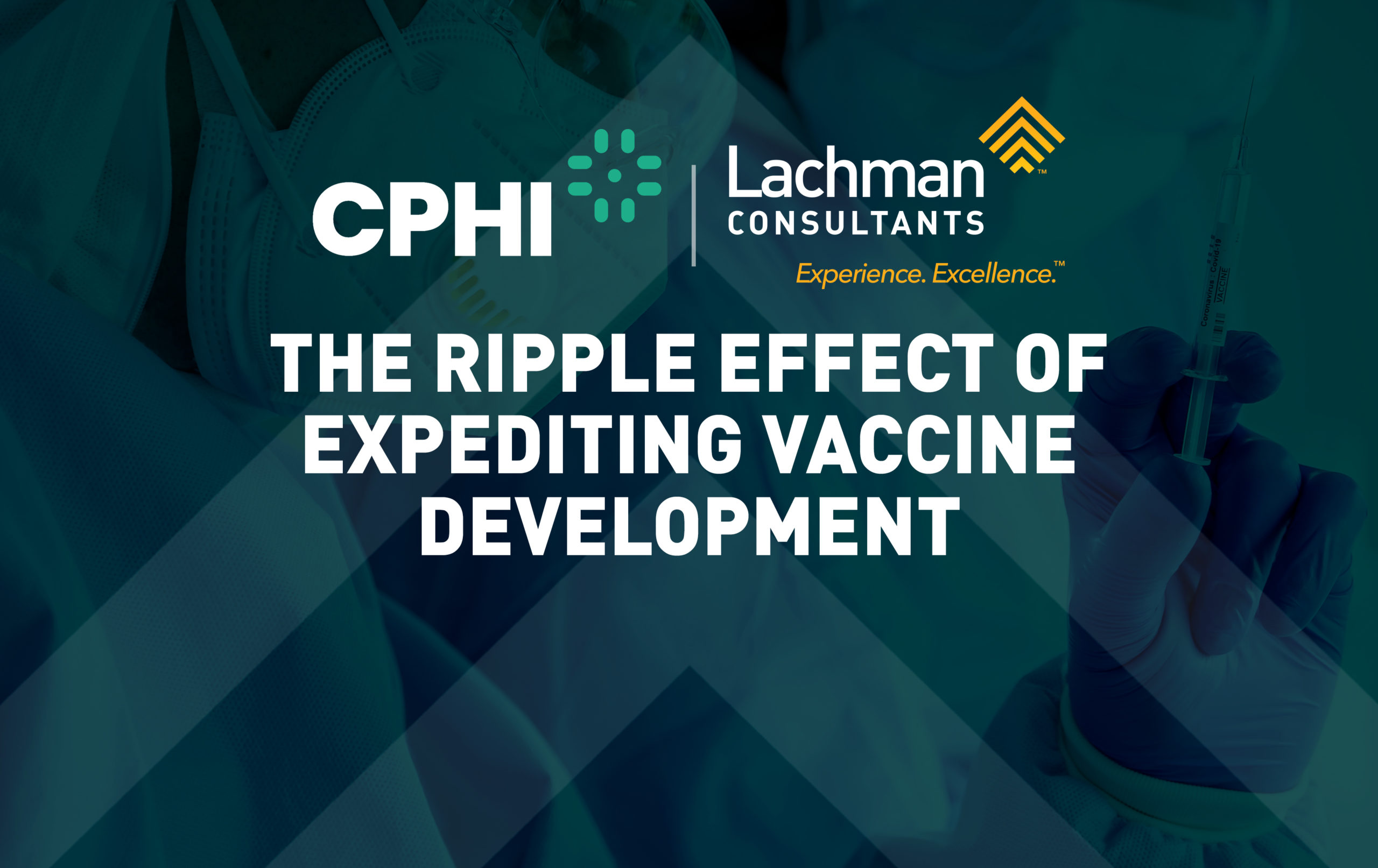Recently I had the opportunity to make a presentation to the CPHI Learning Lab on the topic of The Ripple Effect of Expediting Vaccine Development and the profound social, economic, and operational effects the COVID-19 pandemic has had on our industry.
On February 4, 2020, the Department of Health and Human Services (“HHS”) issued the declaration of a public health emergency. This resulted in specific Emergency Use Authorization (“EUA”) declarations for in vitro diagnostic, personal respiratory protective devices, medical devices, drugs, and biological products. The FDA was active working with companies, small and large, at the outset of the pandemic because of the heightened degree of the health emergency.
Unprecedented in recent history, these circumstances created challenges with EUA manufacturing on a massive scale. Estimates of total vaccine production by the end of 2022 have been as high as 19.8 billion. And with production numbers like that, challenges faced by pharmaceutical manufacturers included scale-up, number of components, shortages of key supplies, process characterization and critical process controls, right equipment and qualifications, and multiple API and component suppliers.
The pace of innovation and the impact to quality has been nothing less than amazing in the recent development of COVID-19 vaccines. Under normal circumstances, a realistic timeline for development would be two-to-five years. In the case of these recent authorizations, the expedited timeline was at most one year, which included GMP flexibilities but did not cut any corners.
FDA expectations regarding quality for EUAs do not lower the standards for quality. EUAs still undergo a complete review by the requisite group within the regulatory bodies. Some of the most common observations by the FDA Office of Pharmaceutical Quality (“OPQ”) included drug substance characterization, stability data, understanding of critical quality attributes and analytical procedures.
At some point, an EUA designation is revoked by the FDA and advanced notice is published in the National Register to allow for a smooth transition for approval or withdrawal. Firms are aware in advance so that they can move into various other activities once that EUA is revoked.
Because of EUAs, the Pharmaceutical Contract Drug Manufacturing Organization (CDMO) has forecasted the market to reach $171 billion by 2026, putting enormous pressure on organizations to maintain quality levels that are demanded throughout the supply network. Having sufficient and robust supplier management programs in place requires a pro-active approach that requires a detailed process for supplier qualification and selection, ongoing supplier evaluation, oversight, and to have the ability to rapidly manage issues when, and if, they occur.
Summing things up, here are a few of the most important lessons I would like to share with you. First, it’s about resources. Have a stable of qualified suppliers and consider redundancy for these suppliers for all goods and services. Second is communications with your suppliers and development partners. For every project, start early and maintain an open dialog with a continuous flow of information
These are just a few of the important points covered in my presentation. Fill out the form here for the presentation.




